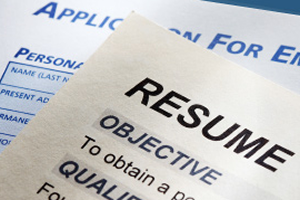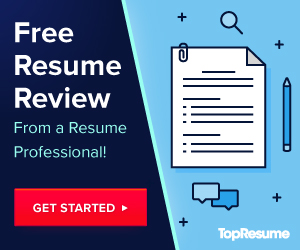Resumes are still the main “calling card” used by job seekers and there are various schools of thought about the formatting of your document.
Here are a few tips for resume formatting that may help you beat the blank screen blues if you’re creating a new resume from scratch:
1. White Space Is Important
Most resumes have at least a half inch margin, but a full inch is preferable. If your margins are smaller, you risk losing content if the document is printed by the hiring manager. Plus, a resume that lacks a one inch margin is harder for the reader to peruse and may look cluttered or chaotic – two qualities that are not often sought by employers.
2. Don’t Leave Empty Fields
If you’re going to use a template, ensure all of the fields are completed with your personal information. Nothing looks worse than seeing “insert job information here” on a candidate’s resume. The better choice may be to look at a variety of resume formats and combine styles based on your level of experience, knowledge, skills, and abilities.
3. Use Spell Check And Have A Human Edit Your Resume
Spell check is great, but it doesn’t catch all grammatical and typographical errors. It’s helpful to have someone else review your resume. Ask for that person’s feedback on the style of your resume, readability, and content.
4. Cut The Fluff
Your resume should be clear and concise. Almost all people applying to jobs know how to use Microsoft Office programs and e-mail, so there’s no need to have a technical skills section on your resume unless you have skills that set you apart from the competition. There’s also no need to list “references available upon request.” If employers want to check your references, they will ask for them.
5. Be Consistent With Your Style
Keep fonts and font sizes the same throughout the document. You should also consider using a similar heading on all pages of the document if your resume is more than one page. This is a good precaution in case the pages become separated.
6. Determine If Your Page Length Is Appropriate
Most resumes are one to two pages. However, if you have more than 20 years of experience and/or a number of academic or professional publications, your resume may be longer. Keep in mind that a longer resume doesn’t equal more review time by the recruiter or interviewer. Your most important information should still be at the top of page one.
Resumes are not static documents, so even if you think you’re finished with crafting a great one, you will want to revise it slightly for each job description you are applying for and add to it as you obtain more experience.
Since more and more recruiters are using social media, you will also want to update your LinkedIn profile to match your new resume.
Enjoy this article? You’ve got time for another! Check out these related articles:











